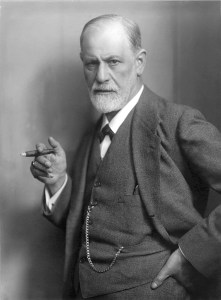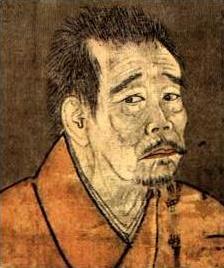There once was a Shakespearean lover,
Who, in darkness, crawled under cover.
Much to his surprise,
Having no use of eyes,
He later learned 'tweren't his lover, but another.
Category Archives: Sex
“What lips my lips have kissed, and where, and why” by Edna St. Vincent Millay
What lips my lips have kissed, and where, and why I have forgotten, and what arms have lain Under my head till morning; but the rain Is full of ghosts tonight, that tap and sigh Upon the glass and listen for reply, And in my heart there stirs a quiet pain For unremembered lads that not again Will turn to me at midnight with a cry. Thus in the winter stands the lonely tree, Nor knows what birds have vanished one by one, Yet knows its boughs more silent than before: I cannot say what loves have come and gone, I only know that summer sang in me A little while, that in me sings no more.
Snail Amore: a Kyōka

the curious child
remains unbaffled by the
complexities
of snail amore:
thinking the lead a tow-snail.
PROMPT: Romantic [Or, romantic]
Depends on the context. If I’m thinking about poetry or philosophy (which I often am,) then it pertains to the early nineteenth century movement that counterpoised the Enlightenment. Those “Romantics” disliked what they saw as the cold rationality of Enlightenment thinking; they valued spiritual and mystical experiences, and they believed it was important to not throw out the spiritual “baby” with the bathwater. That is, like many Enlightenment thinkers, they realized that it was necessary to jettison many of religion’s noxious ideas (e.g. the concept of “chosen people”) and also realized that mindlessly following moral dictates that may or may not have made sense in the pre-Christian Levant could be detrimental to their present-day life experience. However, unlike most Enlightenment thinkers, they did find value in spiritual views of the world as well as in the pursuit of mystical experiences. William Blake (even though he is often labeled pre-Romantic) provides an excellent example. His poems are spiritual to the core, and yet explicitly reject a lot of the moralizing and toxic aspects of conventional religion.
Of course, that variety of “Romantic” is usually given a big-R, and so I suspect the question is after a more colloquial definition. With that in mind, I believe “romantic” means “that which facilitates the unity of two (or more, I don’t judge) people in an immersive intimate experience of each other during a common period of time.” I’m not big on trappings. I think people obsess over trappings because it allows them to slack on the physical / cognitive demands of being fully engaged. This is why sex (done well) is such a great tool both for relationship building and for personal development. It makes it relatively easy (i.e. rewarding) to stay fully engaged in a common experience and in the moment, and to not fall into the attentional abyss.
Traveling Salesman Limerick
Freud Limerick
Ikkyū Limerick
BOOK REVIEW: The Rope Artist by Fuminori Nakamura
 The Rope Artist by Fuminori Nakamura
The Rope Artist by Fuminori NakamuraMy rating: 5 of 5 stars
Amazon.in Page
Release Date: May 2, 2023
This is a hard-boiled detective novel centered around the mysterious death of a kinbaku artist, kinbaku is a Japanese art of tying up a person with rope, the practice sprung from the need to bind prisoners of war and criminals, but it came to be associated with the BDSM (Bondage, Domination / Submission, & Sado-Masochism) activities of kinky sex. The death of the rope artist, Kazunari Yoshikawa, is but the first of a few fatalities that are somehow connected, though the reader only learns how by following the story through to the end. There are several novel elements of the story that grab the reader’s attention, including: sex worker doppelgangers and a man with a missing finger and no known name.
I was engrossed by this novel. It captured my attention from the beginning. The psychology on display in the story is at once fascinating and bizarre. The story is told via three perspectives. The first is a junior detective, Togashi, who is a bit libido-driven and prone to ill-considered decisions. As a main character, one anticipates some of Togashi’s decisions because one knows what drives him, he’s a sucker for a pretty woman, but what the reader doesn’t know is when and how it will blow up in his face. The other main perspective is that of another detective, Hayama, who is the antithesis of Togashi. Hayama is immune to libidinous temptations and is solid as a rock where Togashi is nervous and neurotic. (The third perspective is Yoshikawa’s epistolary confession [no one has completely clean hands in this book.])
If you like crime fiction that’s a bit edgy, you may want to look into this book. That said, a warning for sensitive readers, it is sexually explicit and, while it’s not so sex-centered as to be primarily classified erotica, sex of various types occurs throughout the book.
View all my reviews
BOOK REVIEW: Philosophy in the Bedroom by Marquis de Sade
 Philosophy in the Boudoir by Marquis de Sade
Philosophy in the Boudoir by Marquis de SadeMy rating: 4 of 5 stars
Amazon.in Page
This seven-part dialogue tells the story of a young woman’s education in libertinage (“libertine” shouldn’t be confused with liberal or libertarian.) The book mixes action sequences of a pornographic nature with philosophical discussions on ethics, law, governance, relationships, and religion. A young woman, Eugenie, is sent (without objection) by her father into the care of Madame de Saint-Ange, though another character, Dolmance, serves as both the girl’s primary philosophy lecturer as well as the choreographer of the orgiastic sexual activities that take place throughout book.
Overall, the philosophy is weak, but not altogether lacking compelling ideas, at least in the context of its time – i.e. late Age of Enlightenment. Setting aside the controversial and broadly reviled nature of Sade’s philosophy, I criticize it primarily on the grounds that it misunderstands its own foundations and frequently contradicts itself. The foundations I’m referring to are the workings of the natural world. Libertine philosophy is an offshoot of Enlightenment thinking, and as such attempts to replace the superstition and the arbitrary morals of religion. The question becomes with what one replaces religion-driven bases for determining action. Sade’s argument is that we should see ourselves as part of nature and behave in synch with it. It could be argued that using natural principles as one’s guide is as fine an idea as any, but the problem is Sade doesn’t have an accurate picture of how nature really works. Ironically, he seems to have the same unsophisticated view of nature that his opponents held – i.e. that nature is always and everywhere a brutal and chaotic hellscape. [The main difference is that Sade assumed that one must surrender to this hellscape while his opponents proposed that one must subdue it.] The fact of the matter is promiscuity and intraspecies killing aren’t universal in nature, and cooperation does exist alongside competition in the natural world. (To be clear, interspecies killing is universal for many species and intraspecies killing occurs, but consider venomous snakes of a given species that wrestle for dominance while not using their poison or infantrymen who only pretend to shoot their weapons in combat. Also, I don’t mean to suggest monogamy is the rule [besides in birds, where it is,] but Sade seems to believe there is no order to mating in the natural world.) In sum, nature does not tell us to default to the most savage behavior in all situations, and while animals can be ferocious, they generally don’t go around being jerks for the sake of being a jerk.
Since I also criticized the book’s philosophy for inconsistency, I will give one example to demonstrate a more widespread problem. Dolmance tells us that humans should live checked only as nature would check us (as opposed to by religious dictates,) but tells Eugenie to not listen to the voice of nature that tells her to not behave fiendishly.
I also said this philosophy wasn’t without compelling points. Setting aside the many ideas that were well-addressed by more mainstream philosophers long before Sade entered the picture (e.g. the need to separate the activities of religion from those of government,) Sade’s arguments for seeing a purpose for sexual activity beyond procreation, against seeing the making of more humans as a grand and necessary virtue, and against attaching stigmas to nonprocreative sex are all ideas that have gained traction since the turn of the 19th century and arguably could be furthered to positive ends.
Speaking briefly to the non-philosophical side of the book, I will say that – excepting Dialogue VII (the final one) – this book was much less disturbing than some other of the Marquis’s books (e.g. 120 Days of Sodom or Justine,) Prior to the last section, the book involves consensual activities that aren’t dialed up to the maximum level of shock value. That said, Dialogue VII is as cringeworthy as they come. Also, I didn’t understand how all the orgy choreography could work, but that might be attributable to my lack of imagination.
This book will obviously not be everyone’s cup of tea (too much orgy sex for some, too much philosophy for others, and to much of both for most) but as the Marquis de Sade’s books go, it does delve most deeply into philosophy and is moderately less disturbing than some others.
View all my reviews







